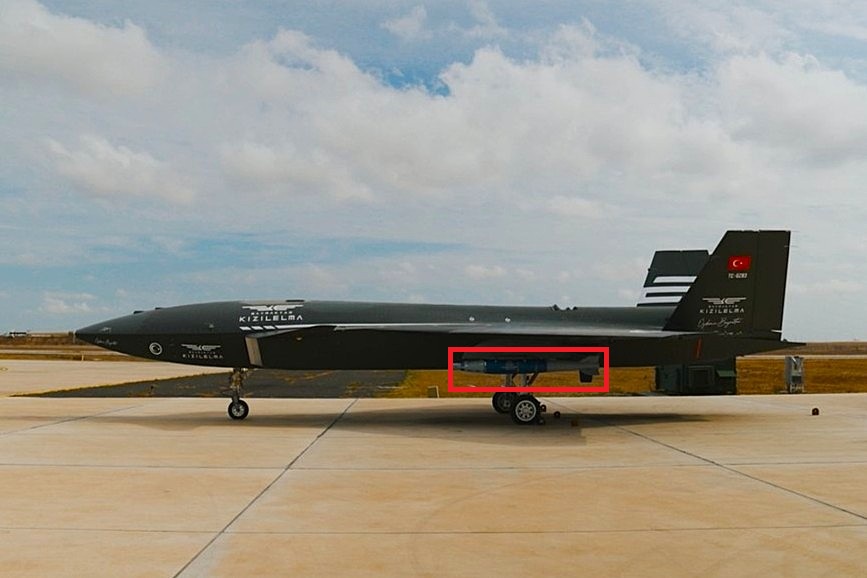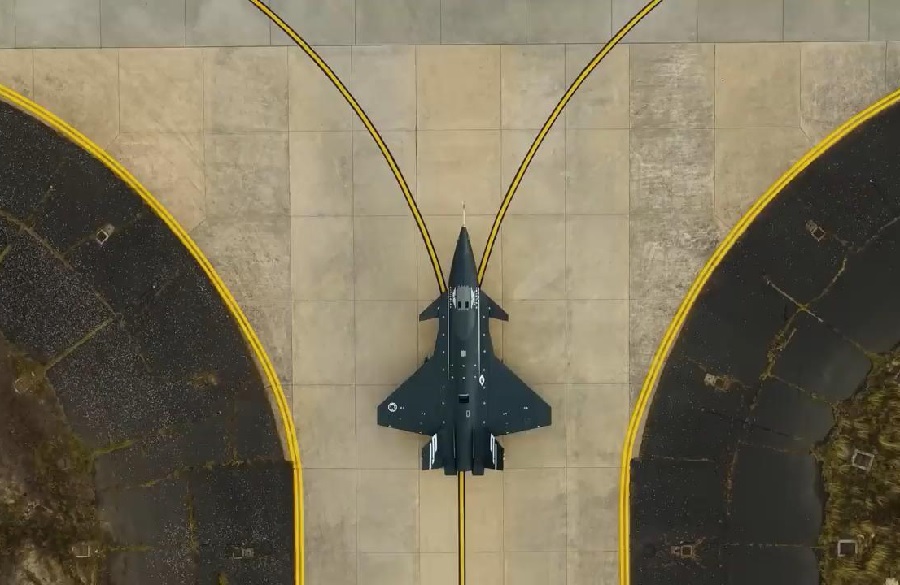Turkish drone maker Baykar Technologies has completed the second captive munition flight test of its Kizilelma unmanned fighter jet, this time using Roketsan’s TEBER-82 precision-guided bomb. The test involved two 500-pound TEBER-82 laser and GNSS-guided bombs mounted on external hardpoints of the Kizilelma PT-3 prototype.
This follows a previous test flight featuring Aselsan’s TOLUN small-diameter bomb, marking the initial phase of Kizilelma’s munition integration with unpowered munitions for simpler testing. Baykar noted that powered munitions such as the CAKIR and UAV-230 air-to-surface missiles will be tested in subsequent stages.
Air-to-air missile trials are scheduled to begin after onboard sensor integration, including the MURAD AESA radar and KARAT 100 infrared search and track system. Baykar stated the Kizilelma is being “developed fully within Turkish borders” with focus on “a future where air combat will be dominated by unmanned technology.”
The Kizilelma UAV features a 1.5-ton payload capacity, maximum takeoff weight of 8.5 tons, and a combat radius of 500 nautical miles. It has a cruise speed of Mach 0.6, can reach Mach 0.9, and is capable of operating at 25,000 feet for over three hours.
Baykar described the aircraft as “a force to be reckoned with, specifically given its aggressive maneuvering capability and stealthiness against radar.” The fighter UAV is designed for takeoff and landing on short-runway aircraft carriers and will carry some munitions internally.
Its design includes low radar cross-section, high situational awareness, and high maneuverability with the AESA radar system. The aircraft has a 45,000-foot service ceiling and supports both line-of-sight and beyond-line-of-sight communications.
Powered by a turbofan engine, the Kizilelma measures 14.5 metres in length, has a 10-metre wingspan, and stands 3.5 metres tall. Its payload options cover electro-optical targeting systems, infrared sensors, AESA radar, laser-guided munitions, missiles, and long-range cruise missiles.

